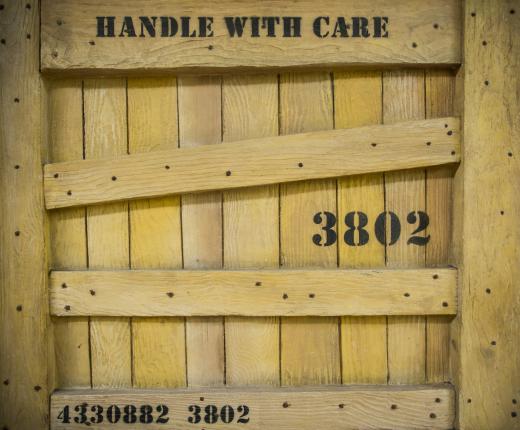The types of pallet manufacturers found in the marketplace are determined by the needs of producers for efficient packaging and shipping. Pallet manufacturing ranges from a one-person pallet company with low overhead and limited production to large-scale production to meet materials handling requirements for major industry. Pallet construction materials are generally either plastic or wood, and designs vary from simple skids to crates to custom pallets.
Stringer pallets are a very common shipping pallet. A pallet company can build either four-way or two-way entry pallets, based on the required entry options for forklift tines when moving the pallets. Dimensions of stringer pallets are variable. The most common measures 48 inches (121.9 cm) by 40 inches (101.6 cm) and is often referred to as a “warehouse pallet."

For international shipping, manufacturers must heat-treat wood pallets to comply with the International Phytosanitary Measure known as ISPM 15. This process eliminates invasive or quarantined pests that might travel in the wood pallet by a process of fumigation with methyl bromide or heat treatment. Plastic pallets or manufactured wood, such as plywood, are exempt from this requirement.
Besides surface dimensions, wood pallets vary in the number and size of deck boards, or boards on the top or bottom surface of the pallet, and in the configuration of the stringers, the board to which deck boards are nailed. A large warehouse pallet might have six or more top deck boards and three bottom deck boards on a rectangular stringer board placed on edge. In a block pallet, a pattern of 4 inch (10.2 cm) by 12 inch (30.5 cm) wood blocks replaces the typical stringer board to facilitate four-way fork lift entry.
Pallet manufacturers vary in their scale and sophistication of production methods. Pallet machinery operable by one person is available for about the cost of a small new economy automobile. Costs then increase, depending upon the versatility of pallet design and pallet production rate desired.
Rebuilt and reused pallets are generally most cost effective, and many pallet manufacturers repair, rebuild, and resell wood pallets. There are inexpensive pallets designed and fabricated to be used once and discarded. The greater the initial cost of a pallet, such as one constructed to handle very heavy loads, the more economic sense it makes to reuse.
Plastic pallets are increasingly used in shipping because of their durability and versatility. A well-made plastic pallet may be used many times without rebuilding. Once a design is set and molds are constructed, plastic injection molding is an efficient method of pallet manufacturing. The cost of injection molding machinery generally puts plastic pallet manufacturing beyond the reach of the one-person shop.
Pallet manufacturers often include crates and boxes in their product line. The requirements of agriculture, especially fruit and vegetable transport, require specialized containers. Generally, these are products of plastic pallet manufacturers and are both efficient and long lasting.
